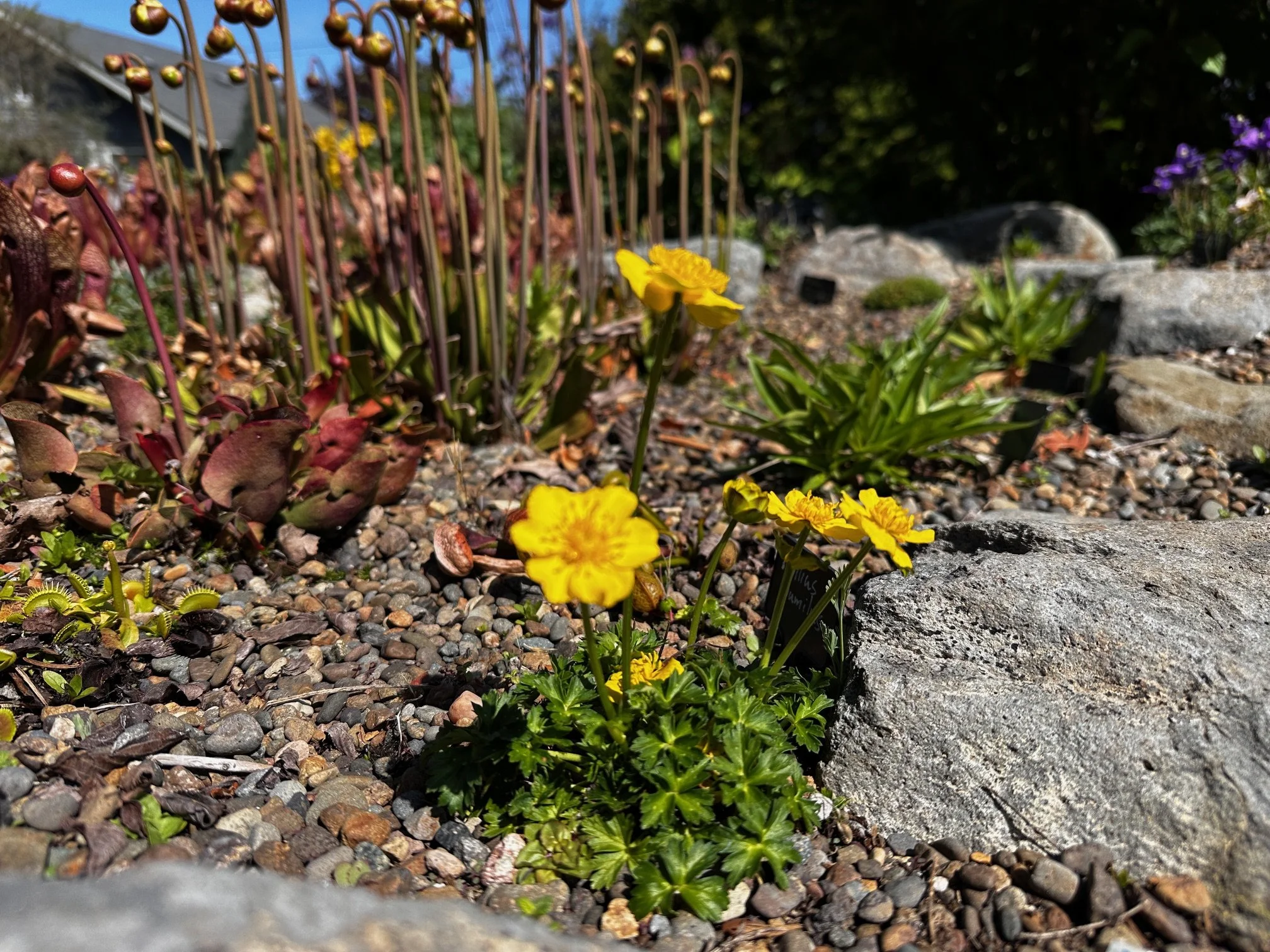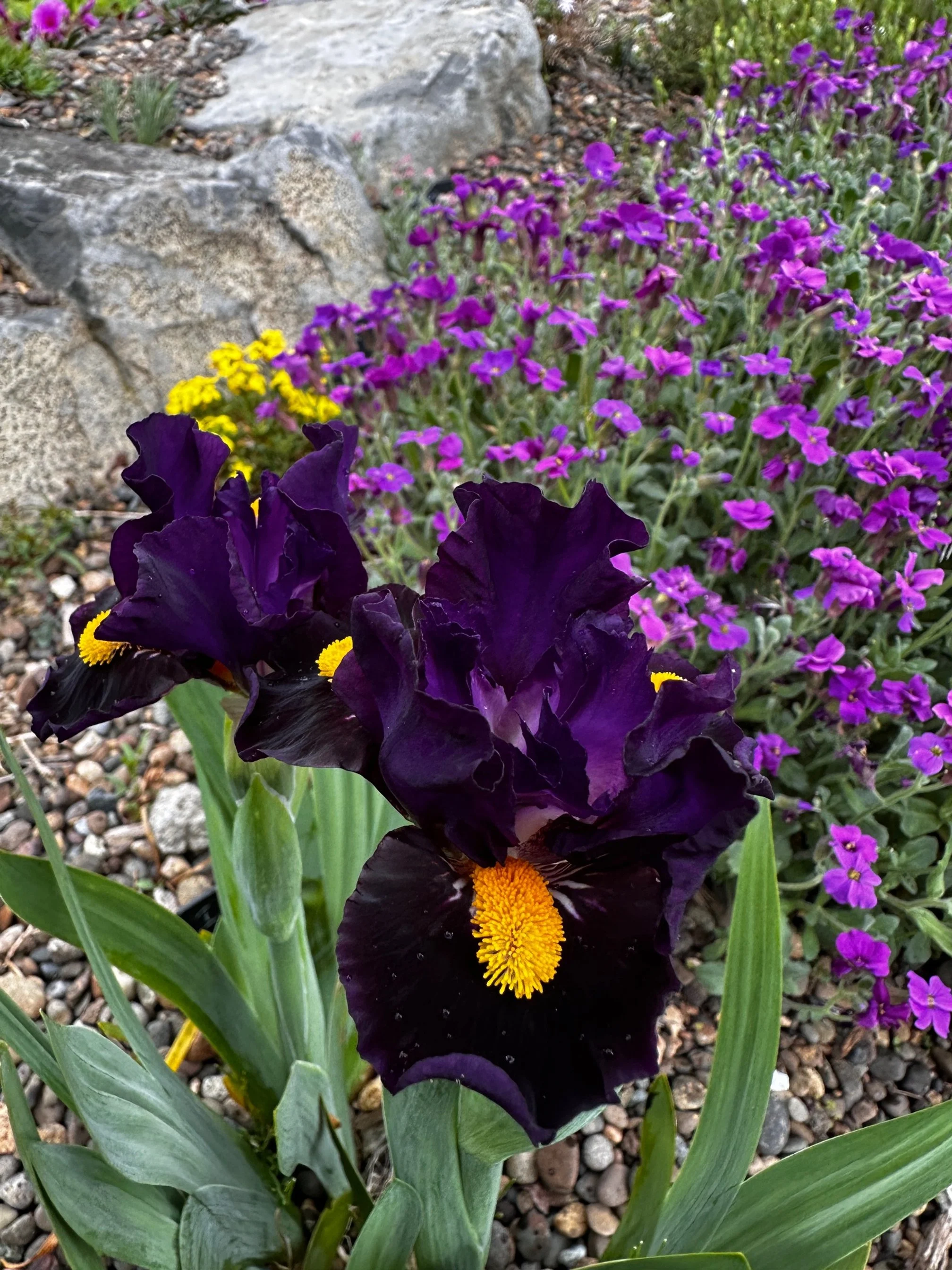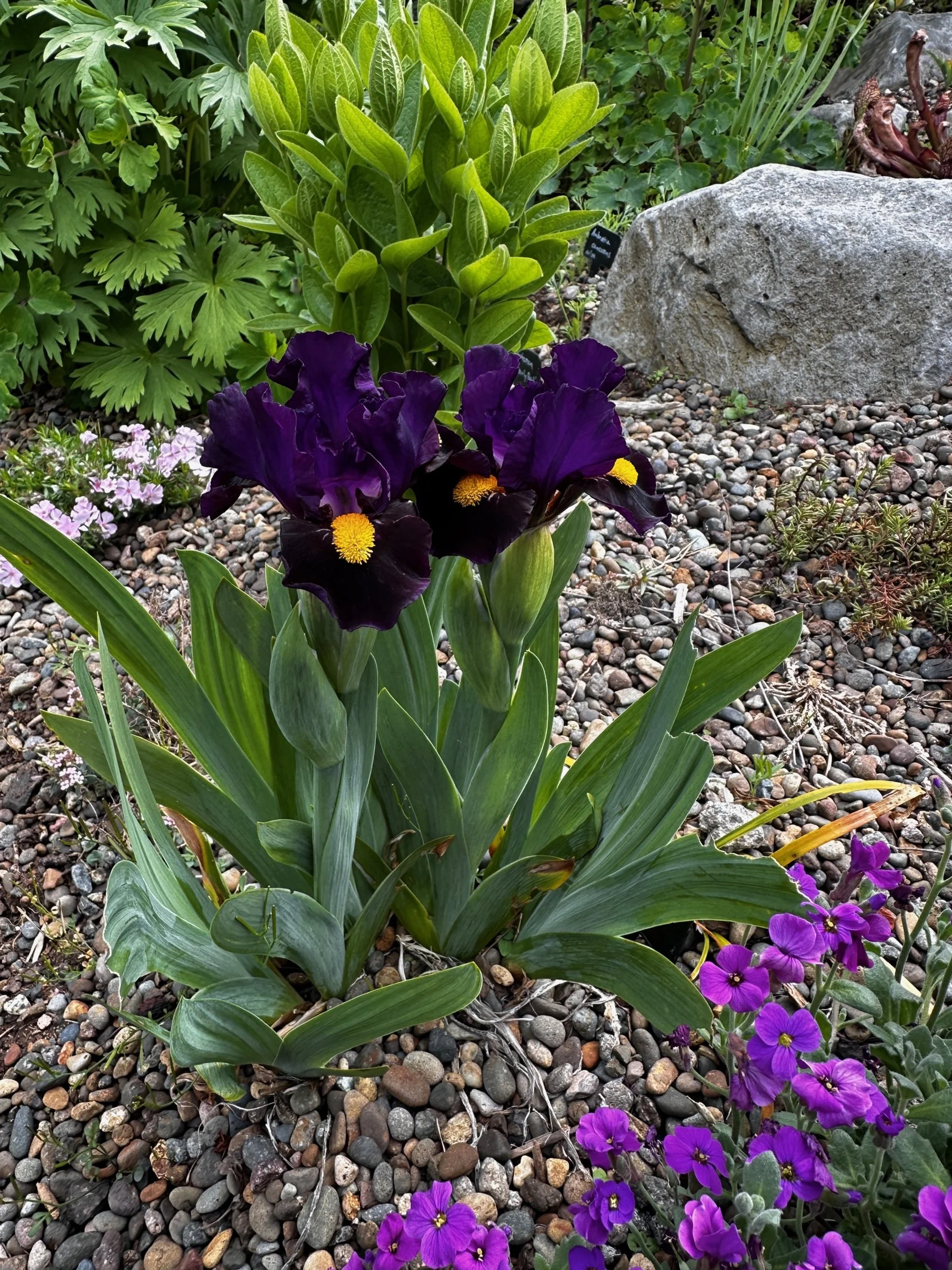
Whalenbergia congesta
Introducing Wahlenbergia congesta, a delicate alpine perennial native to the highlands and montane slopes of New Zealand’s South Island. This charming bellflower thrives in open grasslands, rocky outcrops, and well-drained alpine meadows, where it has adapted to cold winters, dry soils, and high exposure wind swept habitat. Its natural habitats are often nutrient-poor, shaping a resilient plant that excels in similarly challenging garden sites.
In cultivation, W. congesta forms tidy clumps of slender, bright green foliage, topped in late spring and summer with clusters of vivid violet-blue, star-shaped flowers. These blossoms stand lightly above the foliage, offering an airy, luminous quality reminiscent of its native alpine landscapes. As with the other New Zealand harebells I grow, this is not an easy plant to photograph with the bell shaped flowers set on wispy stems it sways with the slightest breeze.
Hardy to at least USDA Zone 7, it is best suited to rock gardens, raised beds, and alpine troughs where drainage is excellent and the site receives full sun. Its natural affinity for lean soils makes it a low-maintenance addition, proving very tough and adaptable in our Western Oregon Garden.
Introducing Wahlenbergia congesta, a delicate alpine perennial native to the highlands and montane slopes of New Zealand’s South Island. This charming bellflower thrives in open grasslands, rocky outcrops, and well-drained alpine meadows, where it has adapted to cold winters, dry soils, and high exposure wind swept habitat. Its natural habitats are often nutrient-poor, shaping a resilient plant that excels in similarly challenging garden sites.
In cultivation, W. congesta forms tidy clumps of slender, bright green foliage, topped in late spring and summer with clusters of vivid violet-blue, star-shaped flowers. These blossoms stand lightly above the foliage, offering an airy, luminous quality reminiscent of its native alpine landscapes. As with the other New Zealand harebells I grow, this is not an easy plant to photograph with the bell shaped flowers set on wispy stems it sways with the slightest breeze.
Hardy to at least USDA Zone 7, it is best suited to rock gardens, raised beds, and alpine troughs where drainage is excellent and the site receives full sun. Its natural affinity for lean soils makes it a low-maintenance addition, proving very tough and adaptable in our Western Oregon Garden.








